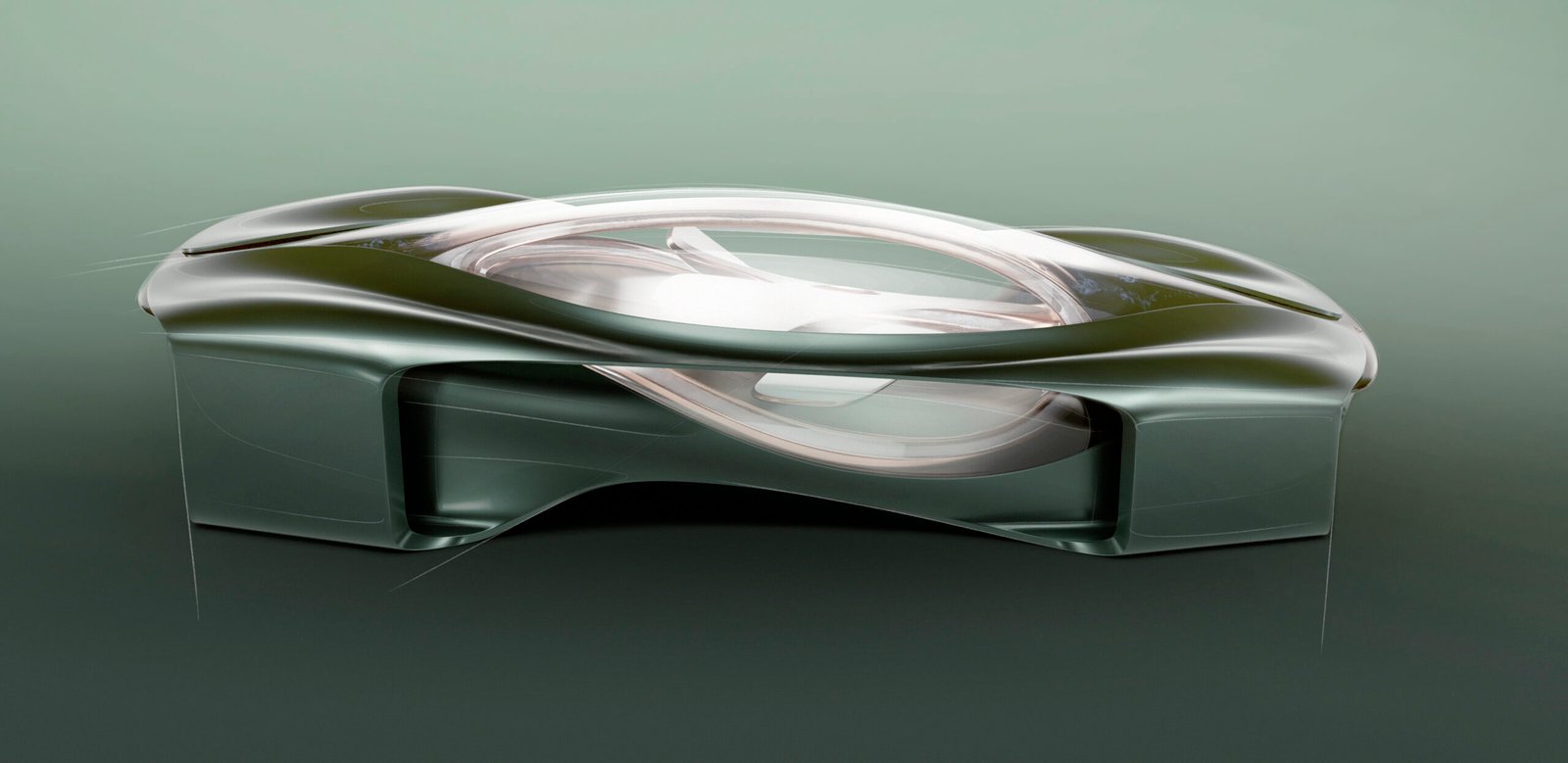
– Bentley Projects showcases the Royal College of Art students’ vision of a greener future for luxury vehicles.
– Design concepts focusing on three specific areas.
– ‘Created World’ based on materiality and craftsmanship.
– ‘Regenerate World’ towards a sustainable future via advanced new functions.
– Meaningful World, which explores how digital aspects can be used to learn, streamline design and connect more deeply with people.
– Eight featured projects represent each of these themes.
(Crewe, 23 November 2022) Bentley worked with MA Intelligent Mobility students at the Royal College of Art London to create collections of visionary design concepts to be shown in Germany and Europe in early 2023.
Students’ Design premiered as Bentley Projects at Guggenheim Museum Bilbao in September as part of the Movement, Automobiles, Art, Architecture exhibition, which explores the intersection of automotive design and art and was curated by Norman Foster Studio.
The designers of the future were invited to explore sustainable luxury and how the cars of the future can be designed to adapt and evolve over their life cycle, so that the can be more sustainable, efficient and meaningful ways of living together with offer people. This goal was driven by Bentley’s “Beyond100” strategy, a holistic vision for the future of the to transform the Bentley brand.

Chairman and Chief Executive, Adrian Hallmark, embodied the vision of this strategy in his ambitious claim:
“Within a decade, Bentley will transform from a 100-year-old luxury car company to a new, sustainable, wholly ethical role model for luxury.”
Professor Dale Harrow, Chair of the Intelligent Mobility Design Centre and Head of Intelligent Mobility Design, Royal College of Art, said:
“We are at a turning point where the onset of autonomous vehicles must be balanced with sustainable materials and processes: students have developed a wide range of responses to this need in collaboration with Bentley who have supported them throughout the design process.”
Bentley challenged students to create designs that embody generational ownership, sustained longevity and rebirth.

Intelligent Mobility Design students were asked to answer a series of questions.
How can we understand sustainable design?
● How can we understand “the craft of making”?
● Why is provenance key?
● What is regenerative design?
● How can we use digital to enhance meaning?
Each of the eight selected projects offered a radically new form of sustainable luxury mobility through vehicles and systems designed to give owners a sense of belonging, respect and meaning, today and tomorrow.
The works in the exhibition reflected three interconnected research spaces:
● How handmade processes reflect and capture the materiality, provenance and entropy processes of objects.
● How to add more than complex and integrated modes of behavior and being to the function and intelligence of the car.
● How can we see digital tools and approaches as more inclusive and valuable ways to revolutionize the performance of our vehicles, and rethink how we educate and connect people through mobility and place creation.
When asked “How can we understand sustainable design?” an experimental hierarchy was developed, consisting of three integrated design spaces: the -created world, the regenerative world, and the meaningful world.

The Made World
This topic has been defined as “creative crafts” with three subsections; handmade, provenance and entropy. When an object is made by hand, a deep material knowledge is acquired that enables one to express oneself. From a sustainability perspective, provenance/authenticity was also defined and embodied in Vivienne Westwood’s quote “Buy less”. Choose well. Do it in the past’. The third subsection, entropy, refers to the number of ways a system can change, as well as the sensitivity and acceptance of the more ephemeral, transient, and changing nature of the artifacts developed.
Shoichi Sato’s “Layers of Tempo” entropy design was inspired by the levels within the building, including the foundation, structure, cladding, services, interior and contents. This concept has been applied to the automobile, where in the future vehicle parts (systems) that age at different rates can be intelligently replaced or swapped out, eliminating redundancy and waste in traditional vehicle lifecycles.
The Regenerative World
In the regenerative world, obvious function, environmental and biological effect turned into the idea of the design. Students pick out then to awareness upon passenger or surroundings focused concepts – as an example, does the auto provide area for the passengers to think, work, sleep or examine and may the auto additionally regenerate the surroundings – as an example offering energy for others, cleaning the surroundings and pleasurable a much broader variety of novel, surroundings ecosystem functions.
Ben Martin’s “Carbon Capture Experience” design, filters the air that moves round the auto as occupants make their adventure enhancing the air high-satisfactory and the surroundings. The car additionally proposes the usage of semi-obvious biopolymers to allow an available visible revel in of this new shape of functionality.

A Meaningful World
The Meaningful World thought about how digital tools could be used to improve the interaction with the car. Digital tools can be used to connect, enlighten and optimize owners.
Naomi Saka’s design for the Bentley Spark takes digital exploration to deeper interactions with the and suggests that future owners will seek greater engagement with their products through a flexible environment that evolves with them. Inspired by nature, Naomi believes the authentic language can be recreated for empathic in-car environments by creating a new adaptive aesthetic language based on the shape and movement of
natural biological systems and organisms. She suggests that with this approach, the can recognize special occasions by greeting passengers in a way that makes the dynamic, communicative and unique.
New Narratives
At the World Economic Forum in March 2022, it was recognized that “More than anyone else, Generation Z cares about sustainability and is bringing to market to make others feel the same way.” Changing mindsets is
the most powerful way to a resurgent future influence and drive action, achieved through the collaboration and vision in design as part of a progressive branding strategy.

